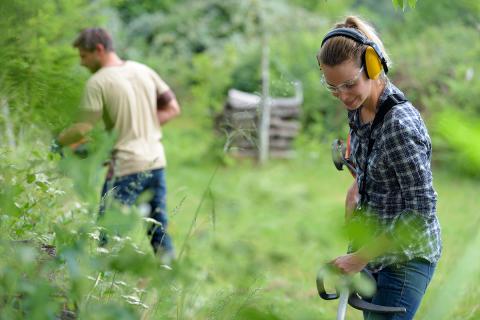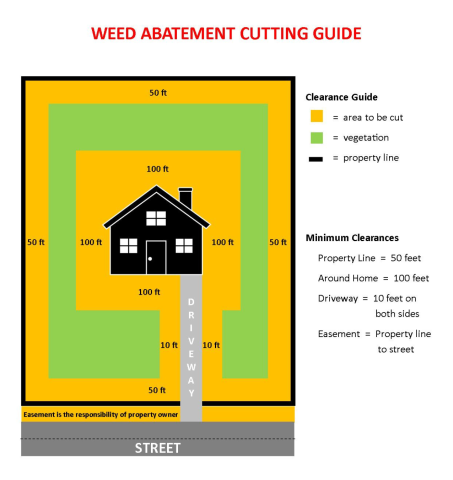The deadline for weed abatement is June 1!
Help Fire & Emergency Services prepare for fire season by clearing weeds.

The deadline for weed abatement compliance was June 1st, 2025. If a property is compliant at the time of our inspection, no further action is taken. If a violation is noted, an orange placard was left indicating the violation and the City's weed abatement contactor will be advised to proceed with abatement. If the City contractor must clear the weeds and/or refuse, the individual property owner will be billed at 166% of the total contractor's cost plus a flat fee of $299. Those charges will then be assessed on the individual owner's property tax bill.
The attached list indicates any property on the City's contractor abatement list. If the contractor arrived and the property was compliant, no further action was taken. If the contractor completed the abatement, the above assessment will appear on your next San Luis Obispo County Assessor's tax bill.
If the City contractor must clear the weeds and/or refuse, the individual property owner will be billed at 166% of the total contractor's cost plus a flat fee of $291. Those charges will then be assessed on the individual owner's property tax bill.
Per the City of Atascadero Municipal Code, Title 6 Health and Sanitation, Chapter 13 Removal of Vegetative Growth and/or Refuse, and Ordinance No. 371, the following guidelines are to be adhered to.
EXEMPTIONS
Exemptions shall apply to any land beyond 50 feet from improved streets, as declared by the City, State or Federal Government, which has been acquired or is managed, for one or more of the following purposes:
a) Animal pastures and agricultural fields growing hay or grains. The interior portion of fenced pastures where the quantity of livestock significantly reduces the vegetative growth, therefore bringing the parcel into compliance. Agricultural fields must be cut at harvest time. Uncut hay and grain is subject to abatement.
b) Habitat for endangered or threatened species or any species that is a candidate for listing as an endangered or threatened species by the State of California or Federal Government.
c) Land kept in a predominantly natural state as habitat for wildlife, plant, or animal communities.
d) Open space lands that are environmentally sensitive parklands.
e) Other lands having scenic values.
Abatement requirements shall remain in effect in waterways where flood preparation measures and emergency flood control mitigation is necessary.
1) This exemption applies whether the land or water are held in fee title or any lesser interest. This exemption applies to any public agency, and private entity that has dedicated the land or water areas to one or more of those purposes or uses, or any combination of public agencies and private entities making that decision.
2) This section shall not be construed to prohibit the use of properly authorized prescribed burning to improve the biological function of land or to assist in the restoration of desired vegetation.
3) In the event that any lands adjacent to land or water areas, as described above, are improved such that they are subject to this chapter, the obligation to comply with Section 6-13.04 shall be with the person owning, leasing, controlling, operating, or maintaining the occupied dwelling or occupied structure on the improved lands. All maintenance, activities, and other fire prevention measures required by Section 6-13.04 shall be required only for the improved land, and water areas as described above.
The Fire Chief has established the following requirements:

Clearance Requirement of Vegetative Growth (noxious weeds) Maximum height of 4 inches;
1. Located within 100 feet of any building or structure, or to the property line, whichever is nearer;
2. Located within 50 feet from the edge of any improved roadway;
3. Located within 50 feet from each property line;
4. Located within 10 feet on each side of driveways.




